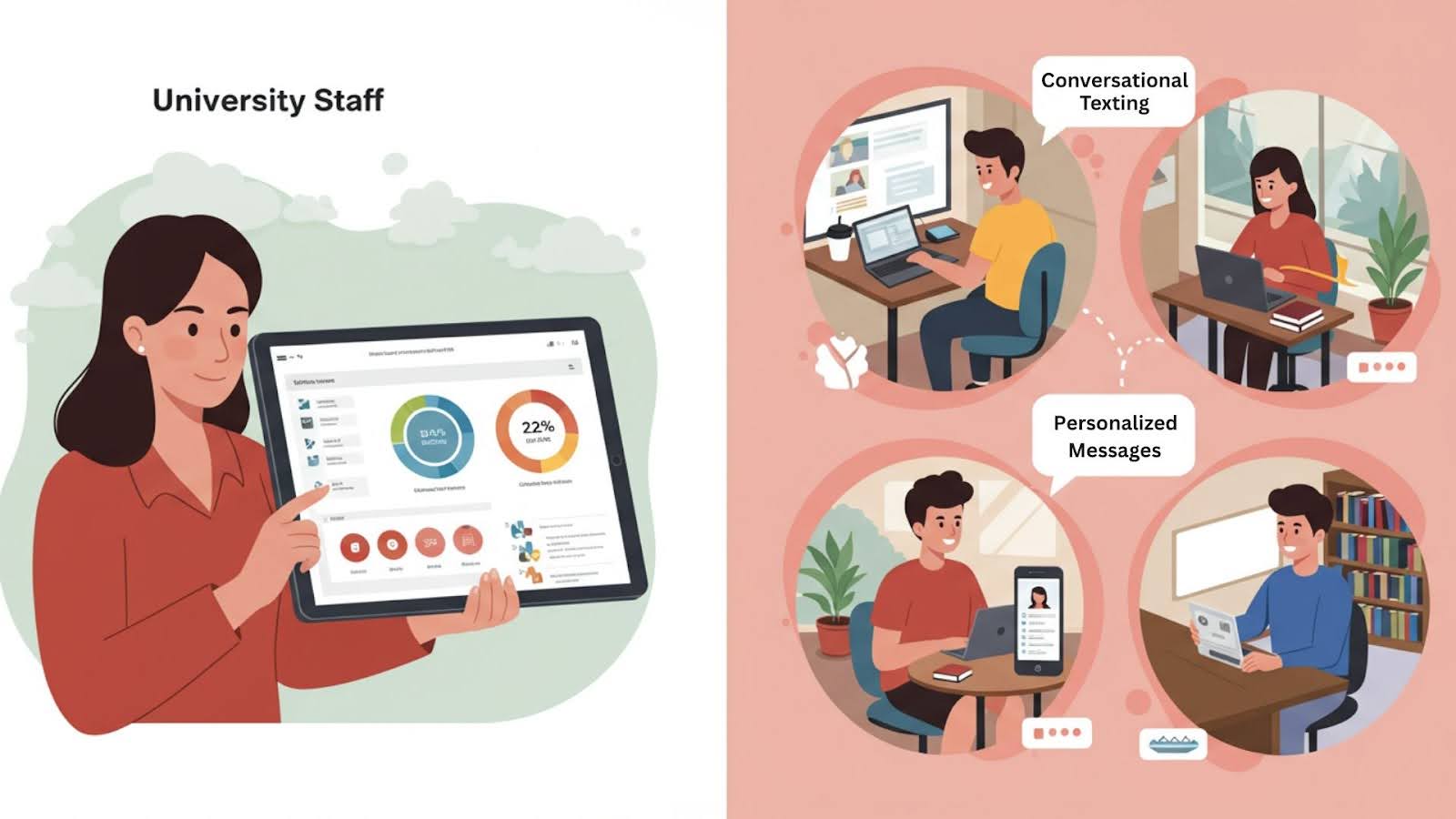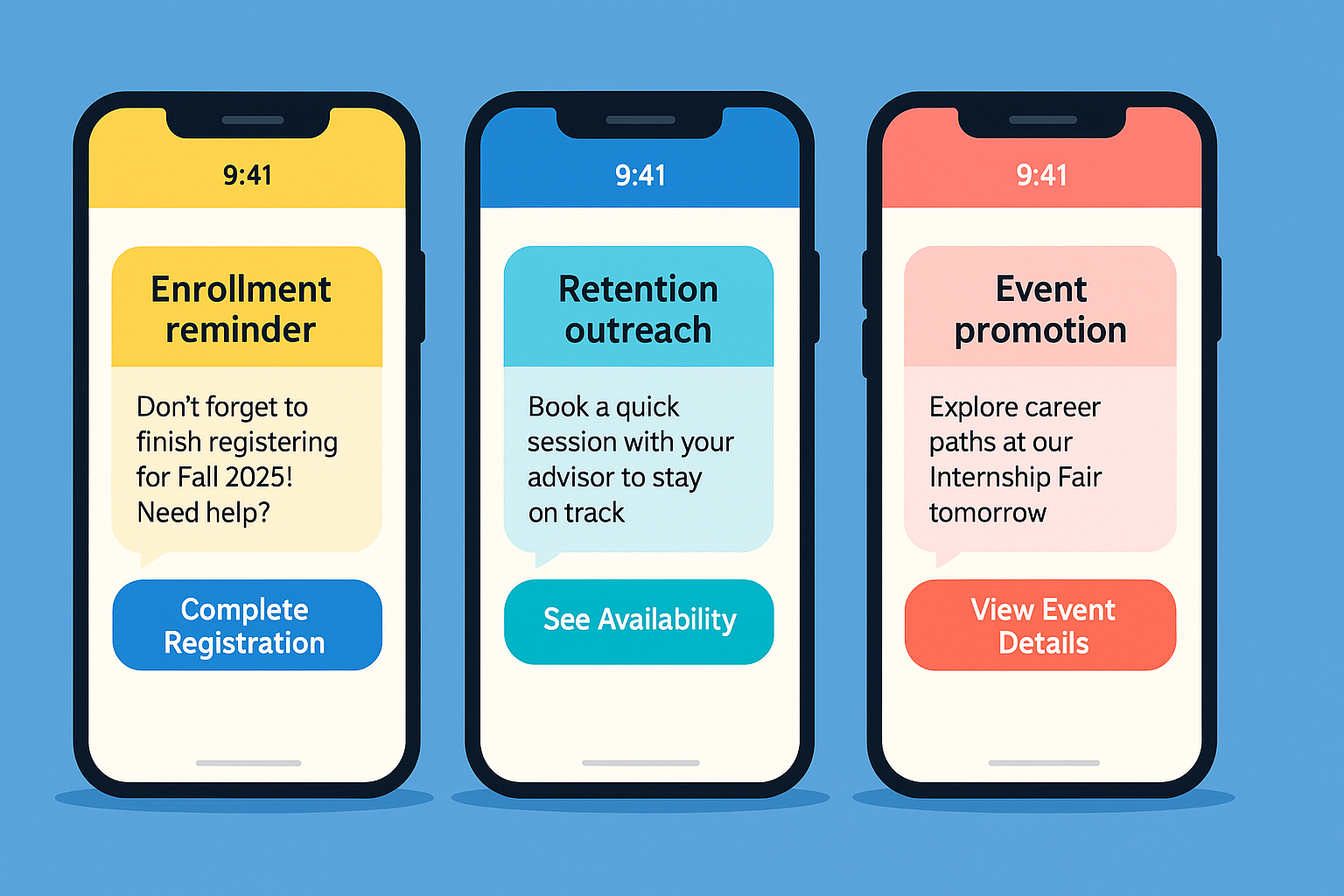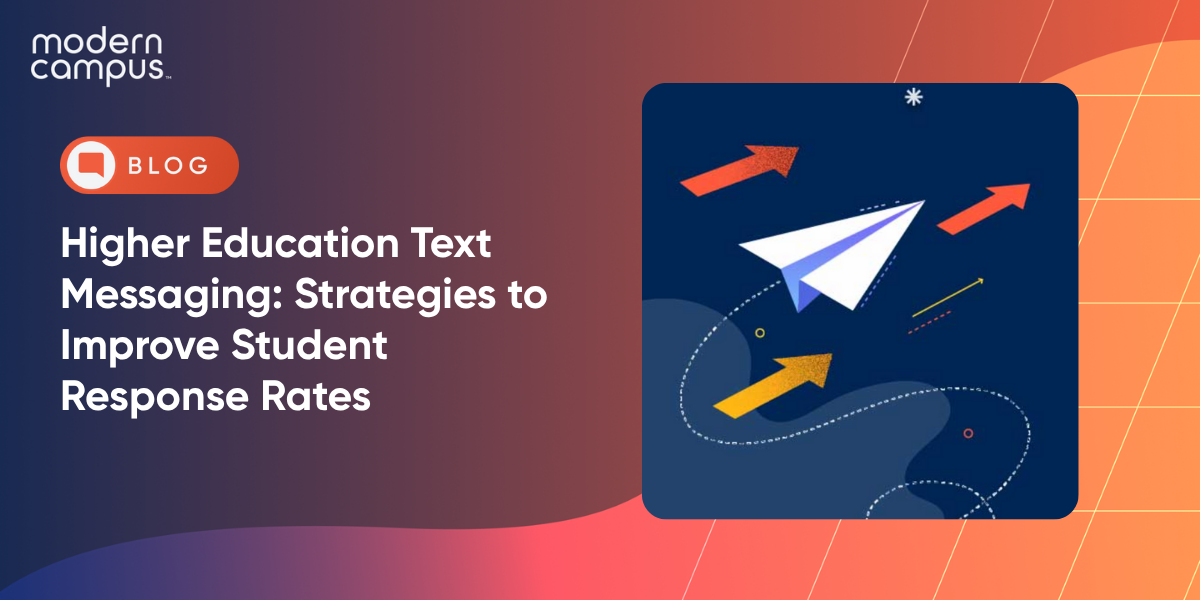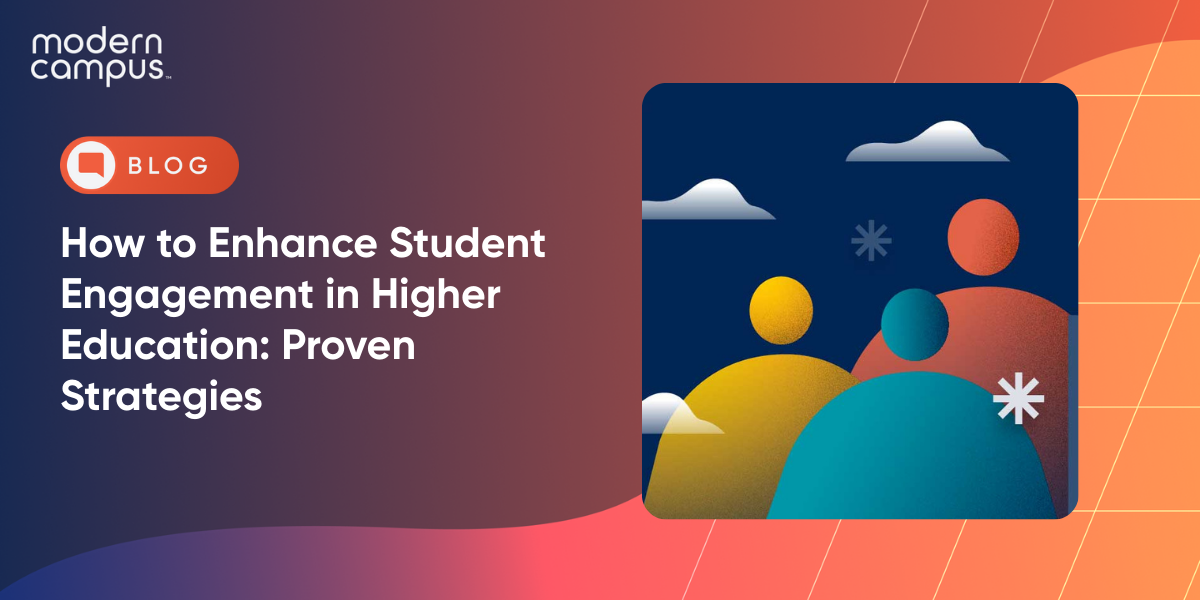Higher Education Text Messaging: Strategies to Improve Student Response Rates
Students are inundated with digital content, and their communication preferences have shifted drastically. Email inboxes are overflowing, phone calls are often ignored, and attention spans are shrinking. In contrast, text messaging remains one of the most effective channels for reaching students quickly and reliably. SMS open rates are as high as 98%, with most replies within 30 minutes of receipt. For institutions seeking timely responses to admissions, registration, financial aid and campus engagement prompts, leveraging a higher education text messaging platform is essential.
However, students expect messages that are personalized, relevant and actionable. They also want the flexibility to respond in real time, on their own terms. As higher education evolves to meet learners’ expectations for seamless, tech-forward experiences, modern communication tools must keep pace. A higher education texting platform that integrates with existing systems and supports data-informed outreach can improve response rates while reducing staff workload. This blog explores strategies that align with current trends and offers guidance on building a student-centered texting approach that drives meaningful engagement.
What a Higher Education Text Messaging Platform Can Do For Your Institution
Immediacy and personalization define the student experience, so relying solely on traditional communication channels isn’t enough. Institutions need tools that meet students where they are (on their phones) and deliver the right message at the right time. A higher education text messaging platform enables direct, contextual communication that learners expect.
Meeting Students on Their Terms
Students, especially Gen Z, are digital natives who value fast, frictionless interactions. Current and prospective students increasingly expect institutions to offer digital-first experiences across every touchpoint. Texting meets this expectation by offering a familiar, low-barrier way to receive updates, ask questions and take action. Whether it’s confirming class registration, responding to financial aid reminders, or getting alerts about campus events, students are more likely to engage when communications are short, personalized and sent via SMS.
A higher education texting platform allows staff to tailor messages to specific groups, automate replies based on keywords or behavior and integrate communications into broader engagement campaigns without overwhelming internal resources. This level of customization ensures that students receive timely, relevant messages without feeling like just another name on a list.

The Decline of Email and the Rise of Real-Time Messaging
While email still plays a role in higher education, its effectiveness is dwindling. A report found that 77% of students prefer text messages for relevant communication from their institution. Conversely, institutional emails often get lost in crowded inboxes or overlooked entirely.
Institutions must adopt a texting strategy that mirrors how students already communicate in their daily lives. Real-time messaging enables quick two-way exchanges that can reduce administrative bottlenecks, minimize missed deadlines and foster stronger relationships. When backed by a texting solution designed specifically for higher education, institutions can align their outreach efforts with the speed and responsiveness students expect, leading to better outcomes across the student lifecycle.
Modern Strategies to Improve Student Response Rates
Getting messages to students is one thing; getting them to act is another. A modern higher education texting solution must do more than just send messages. It should enable institutions to deliver timely, relevant communication that resonates with students’ individual needs and behaviors. The following strategies are proven to boost student response rates while optimizing internal efficiency.
Personalization at Scale: Go Beyond “Hi [First Name]”
Personalization is an expectation. Students want messages that speak directly to their situations, whether it's their program of study, financial aid status or upcoming deadlines. But effective personalization goes beyond inserting a first name. With the right platform, institutions can segment audiences by major, year, location and engagement history to craft highly targeted messages.
For example, sending a registration reminder with a link to the student's unique course schedule or providing financial aid information tailored to their eligibility status shows that the institution understands and supports their journey. These data-driven touches signal value and relevance, increasing the likelihood of a timely response.
Timing Is Everything: Use Behavior-Triggered and Scheduled Texts
Sending messages at the right moment can dramatically improve response rates. Behavior-triggered texts, based on actions like starting but not completing a registration form, prompt students while their intent is high. Scheduled messages timed around key milestones (e.g., enrollment windows, tuition deadlines or campus events) ensure that critical information is delivered proactively, not reactively.
Additionally, higher education text messaging platforms can analyze engagement patterns to determine optimal send times for different student groups. By aligning outreach with when students are most likely to read and respond, institutions can drive more meaningful interactions with less effort.
Blend SMS With Other Communication Channels
While SMS is powerful, it’s even more effective when integrated into a broader omnichannel strategy. A higher education texting solution that works in tandem with email, in-app messaging, chatbots and social media ensures consistent, cohesive communication across all touchpoints.
For example, a student might receive a text prompting them to check their portal for personalized course recommendations. The portal then offers additional context and next steps. By orchestrating messages across platforms, institutions can guide students through complex tasks while reinforcing key messages, boosting both understanding and follow-through.
Choosing the Right Higher Education Texting Platform
Selecting the right higher education texting solution can achieve meaningful engagement. Beyond simply sending messages, the best platforms empower institutions to scale communication, integrate with existing systems and maintain compliance while delivering a seamless experience for students and staff alike.
Features That Drive Engagement and Action
Look for a platform purpose-built for higher education, with capabilities that go beyond mass texting. Key features should include list segmentation, two-way messaging, automation based on student behavior and dynamic fields for personalization. Some advanced platforms also offer templates for common outreach scenarios, like registration reminders or financial aid nudges, helping staff save time and maintain consistency.
Equally important is mobile optimization. Texts should include short, actionable content with links that direct students to mobile-friendly pages, portals, or forms. When students can move from message to action in a few taps, conversion rates naturally rise.
Integration With SIS, CRM and Other Tools
A strong higher education texting platform doesn’t operate in isolation. It should integrate with your Student Information System (SIS), Customer Relationship Management (CRM) tools, Learning Management System (LMS) and other digital platforms to ensure data consistency and automatically trigger personalized messages.
For instance, if a student drops a class or has a hold on their account, the platform should be able to send a pre-written alert without staff manually intervening. This kind of integration boosts responsiveness and frees up your team to focus on high-value interactions rather than chasing down operational details.
Security, Accessibility and Compliance Considerations
Protecting student data is non-negotiable. Choose a platform that meets rigorous compliance standards, such as FERPA, TCPA, and ADA/WCAG 2.1 guidelines. Your institution can remain legally protected, and every student, including those with disabilities, can access the messages they receive.
Additionally, opt-in and opt-out functionality must be intuitive and enforced by the system, reducing the risk of misuse or regulatory violations. In recent years, cybersecurity concerns have plagued the education industry. One study reported nearly 1,000 breaches impacting students' data. A trustworthy platform should log all communication for transparency and auditing purposes while proactively protecting learners' information.
What to Say and How to Say It: High-Performing Message Templates
The success of your texting strategy hinges on how you craft messages. Effective SMS communication is short, direct and personalized. A thoughtful message can boost response rates and build trust, while a poorly timed or impersonal one can lead to unsubscribes. Leveraging a higher education text messaging platform allows institutions to standardize best practices while customizing content for different audiences and goals.
Nudge Templates for Enrollment, Retention and Events
Nudge messages are gentle, action-oriented prompts that encourage students to complete a task or stay engaged. These are especially powerful when tied to key moments in the student lifecycle. For example:
- Enrollment Reminder: “Hi [First Name], don’t forget to finish registering for Fall 2025! Need help? Text
back or visit your portal: [short link]”
- Retention Outreach: “We noticed you haven’t checked in with your advisor yet. Book a quick session to
stay on track: [advisor scheduler link]”
- Event Promotion: “Explore career paths at tomorrow’s Internship Fair, 10am–2pm in the Student Center. See who’s hiring: [event page link]”
Pre-built templates within your texting platform can streamline message creation, ensure consistent tone and reduce manual work, which is especially helpful for leaner teams managing large student populations.

Do’s and Don’ts of Text Message Tone and Length
Effective messages are conversational yet professional. Use plain language, contractions and an approachable tone, but avoid slang or over-familiarity unless it's appropriate to the context. Always lead with value: What’s in it for the student? Why should they care right now?
Do:
- Keep messages under 160 characters when possible
- Use the student’s name or relevant program info
- Include a clear CTA (Call to Action)
- Use trackable short links
Don’t:
- Send vague messages like “Check your email for more info”
- Overuse emojis or excessive punctuation
- Assume one message fits all students
Clear, respectful communication builds credibility. A good platform also allows A/B testing and engagement tracking, so you can learn what messages perform best and refine your strategy over time.
Measuring Impact: From Clicks to Conversions
To truly improve student response rates, institutions need to measure outcomes. A modern higher education texting platform should offer built-in analytics that help staff understand what’s working, identify areas for improvement and optimize campaigns in real time. Data-driven insights ensure that texting remains not just a communication tool but a strategic asset.
Tracking Engagement, Response Times and Student Actions
Key performance indicators (KPIs) for text campaigns should include open rates, click-through rates, response times and follow-through on calls to action (e.g., completed registrations or event attendance). Many platforms offer dashboards that visualize this data at a glance, making it easier to identify which messages generate the most student engagement.
For example, if registration reminders sent at 6 p.m. get double the response rate of those sent at noon, staff can adjust future timing accordingly. Similarly, tracking the effectiveness of different message formats or keywords helps fine-tune the tone and content to better match student preferences.
Some platforms allow integration with CRMs and student portals to connect messaging activity with larger outcomes, such as application completion, class attendance or advising session sign-ups. This holistic view enables teams to make more informed decisions and justify resource allocation.
Using Insights to Refine Campaigns Over Time
The best communication strategies evolve. With robust reporting, institutions can continuously test, learn and improve. A/B testing tools within your higher education texting solution can compare different message styles, lengths or CTAs to identify top performers.
Staff can also monitor opt-out rates to ensure messages aren’t overwhelming or irrelevant to students. High unsubscribe numbers may signal that frequency, tone or targeting needs to be adjusted. Conversely, a steady rise in engagement or on-time student actions signals that messaging is resonating.
By combining performance data with student demographics and behavior, institutions can deliver smarter, more personalized communication over time, turning every message into an opportunity to build trust and move students forward on their educational path.
The Future of Texting in Higher Ed Communication
As student expectations evolve, so too must the communication tools institutions rely on. Texting is part of a larger shift toward highly personalized, tech-enabled engagement. The next generation of higher education texting solutions is being shaped by artificial intelligence, automation and deeper integration across the student lifecycle.

AI, Chatbots and Two-Way Communication
The rise of AI-driven chat and natural language processing is transforming how students interact with institutions. Intelligent chatbots can now respond to routine questions in real time, like “When is the add/drop deadline?” or “Where can I see my financial aid status?” Staff can then handle more complex needs.
Some platforms support predictive analytics that flag students at risk of disengaging and initiate proactive outreach. For example, if a student hasn’t logged into the portal in several weeks or missed multiple registration prompts, the system can automatically trigger a personalized text encouraging re-engagement.
Two-way texting powered by AI makes interactions feel less like broadcasts and more like conversations. Students feel supported rather than managed, which builds trust and increases response rates.
Unifying Texting With Personalized Digital Experiences
Texting is most powerful when it serves as a gateway, not the destination. Future-focused institutions are integrating their messaging platforms with web personalization engines, student portals and engagement tools to create a seamless, guided experience.
Consider this scenario: a student receives a text inviting them to explore internship opportunities. The link takes them to a personalized portal that recommends opportunities based on their major, location and career goals. From there, they can RSVP for events, message a career coach or schedule an interview within a single digital journey.
This type of interconnected experience meets students’ expectations for immediacy, relevance and simplicity. As institutions compete to attract and retain learners, delivering frictionless engagement creates a competitive advantage.
Modernize Your Communication Strategy
Reaching students requires more than good intentions; it demands the right tools, smart strategies and a deep understanding of evolving learner expectations. A higher education text messaging platform gives institutions the power to deliver timely, personalized messages that cut through the noise and inspire action. Whether nudging students to complete enrollment, promoting campus resources or keeping learners on track, SMS remains one of the most effective ways to engage.
At Modern Campus, we understand the pressure institutions face to do more with less, especially when it comes to student communication. We’ve built our solutions to integrate seamlessly with your existing systems, support personalized outreach at scale and deliver measurable results. From automation and AI to behavior-driven campaigns and compliance assurance, we help you engage modern learners with clarity and confidence. Request a demo today to boost student response rates and modernize your communication workflows.
Last updated: May 22, 2025



